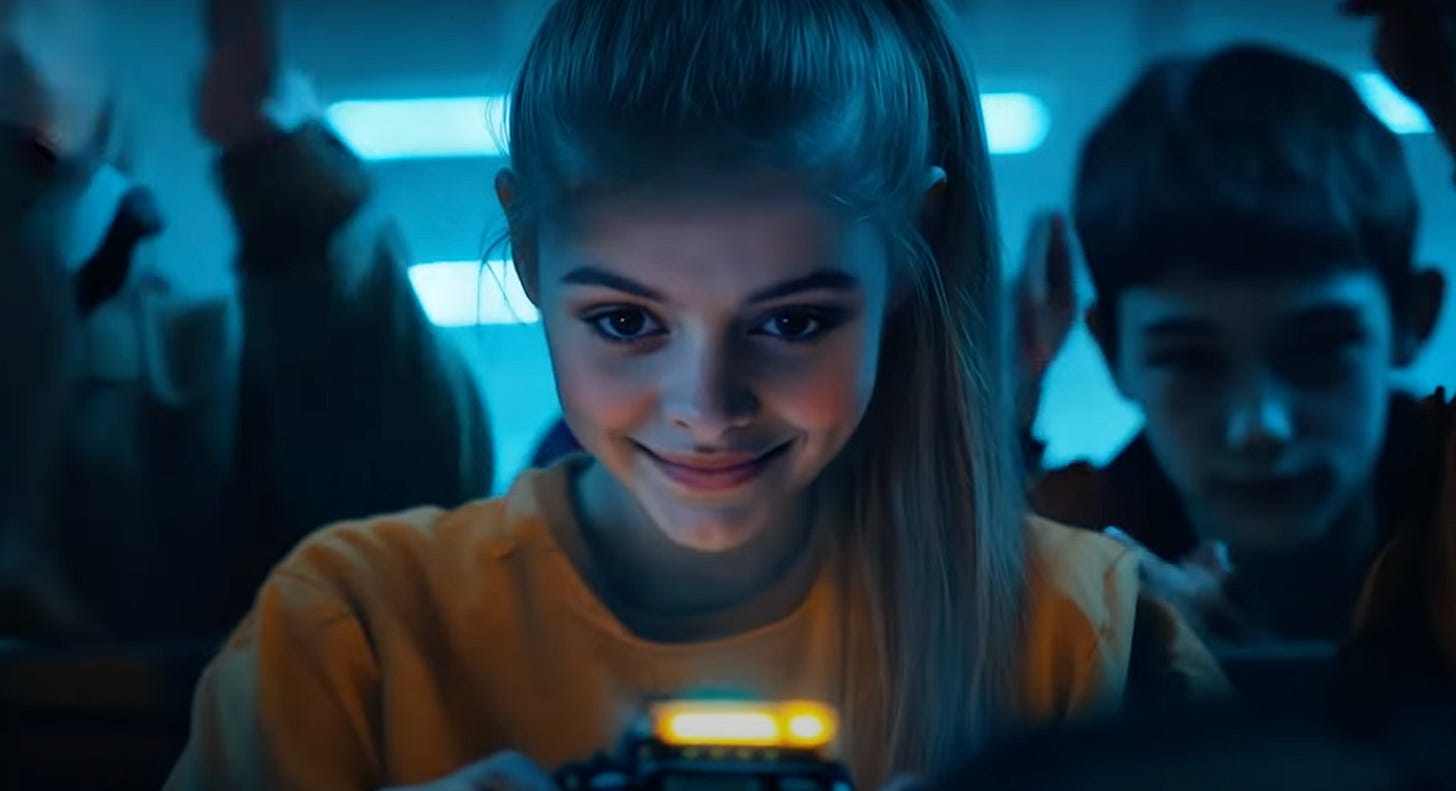⚡ Input is Output - Issue #6
Slow creativity, units of time, climb Everest in a week, the age of average.
Hello, I’m back. Happy New Year!
I thought about writing a wrap-up on 2024, but the idea of looking back felt less compelling than the challenge of looking forward. A new year always feels like an invitation to start fresh, full of optimism for what's ahead. But as 2025 begins, I find myself caught between two forces: the hopeful energy that January brings and the uneasy acquiescence I sense rippling through Big Tech following the Trump inauguration.
This tension, the push and pull between optimism and resignation, feels like the defining mood of the moment. It's a stark reminder that innovation, creativity, and bold ideas are more critical than ever.
In this issue of Input is Output, I want to focus on that crossroads, exploring where we go from here and how we can keep moving forward, even when the landscape feels uncertain.
Let's dig in.
This week’s Input is Output in summary:
⚡ 5 Things:
💭 Thought for the week: Slow creativity is the future of innovation
⚡ Commercially streaming AI-generated movies
TCL, the world's largest TV manufacturer, is pioneering AI-generated films through its TCL Film Machine studio, aiming to revolutionise content creation and consumption. The company showcased five AI-generated short films at a recent premiere, marking a significant step in integrating artificial intelligence into mainstream entertainment.
TCL's approach accelerates the content creation process and introduces new possibilities for personalised and adaptive storytelling. Moreover, the company's strategy to fund these AI-generated films through targeted advertising highlights a novel business model in the streaming industry, leveraging AI to enhance content delivery and monetisation.
However, the current limitations of AI-generated media are evident. The films presented exhibited issues such as inconsistent character appearances and unnatural movements, underscoring AI technology's challenges in achieving seamless and lifelike animations. Despite these imperfections, TCL's venture into AI-generated films represents a bold experiment in the evolving landscape of digital content, offering a glimpse into the future of AI-assisted media production.
You can read the full article here.
⚡ There’s no shortcut to publishing a book
Kelsey McKinney critiques the notion that artificial intelligence can expedite the book publishing process without compromising quality. She highlights the essential roles of human editors, fact-checkers, and copy editors in refining manuscripts, arguing that AI cannot replicate these professionals' nuanced contributions.
McKinney warns that relying on AI to produce a high volume of books may flood the market with subpar content, ultimately devaluing the art of writing and undermining the reader's experience.
You can read the full article here.
Random facts… Kindle sales are declining. Sales of physical book are increasing. It doesn’t take a genius to work out why.
⚡ NVIDIA Project DIGITS
NVIDIA's Project DIGITS is a personal AI supercomputer designed to provide AI researchers, data scientists, and students with desktop access to powerful AI capabilities.
This exciting development signifies a shift towards more accessible and localised AI development. By bringing supercomputer-level performance to the desktop, Project DIGITS will empower individual developers and smaller organisations to experiment with and deploy sophisticated AI models without relying solely on large-scale data centre resources. This democratisation of AI technology could accelerate innovation and broaden the scope of AI applications across various industries.
I won’t bore you with all the technical specifications. You can read about all that here. Prices start at $3,000 and DIGITS will be available in May 2025.
⚡ The age of average
Alex Murrell's The Age of Average paints a striking picture of how the world around us, our cities, brands, films, homes, and even faces, is slowly blending into one indistinguishable mass. From the sterile "Airbnb aesthetic" of minimalist white walls and Edison bulbs to the formulaic structure of blockbuster movies, Murrell argues that we are witnessing an era of extreme homogenisation.
Why? The culprits are many, such as market research optimising for the safest bets, globalisation spreading the same aesthetics everywhere, and algorithms amplifying what already works, leaving little room for risk or true originality. The result? Brands look the same, cities feel the same, and culture is losing its sharp edges.
Murrell's call to action? Embrace weirdness. Celebrate distinctiveness. Break free from the algorithmically curated monotony and create things that truly stand out. In a world of sameness, the bold and the different don't just survive; they thrive.
You can read the full article here.
⚡ How to climb Everest in a week
We all love shortcuts. From hacking productivity to hustle culture, there's an obsession with faster, easier, and optimised. But what if, in some cases, shortcuts weren't just risky but deadly?
Austrian mountain guide Lukas Furtenbach is pioneering a one-week Everest expedition, using a mix of xenon gas, pre-acclimatisation, and logistics wizardry to cut a 10-week ordeal down to less than the length of a beach holiday. His clients? Time-poor, cash-rich adventurers who don’t have months to spare but still want to bag the world’s highest peak.
It’s an audacious experiment in biohacking, extreme tourism, and the ethics of adventure. By inhaling xenon, a noble gas used in anaesthesia, climbers can supposedly fast-track their acclimatisation, reducing time spent in the deadly “death zone.” Furtenbach sees it as an innovation that makes Everest safer by limiting exposure to risk. Critics see it as yet another shortcut that strips mountaineering of its meaning.
It feels like Everest is becoming an amusement park. From luxury camps, to helicopter shuttles, and now high-speed ascents, the mountain is increasingly a trophy for those who can pay rather than those who can endure.
Expeditions used to be about hardship, patience, and immersion. Now, it’s about efficiency, cutting out the experience in favour of the achievement.
Is this the future of extreme travel? Or does this mark the moment where Everest’s mythology finally collapses under the weight of convenience?
You can read the full article here.
💭 Thought for the week: Slow creativity is the future of innovation
As I continue to enjoy paternity leave, my life has become much slower. I can't say I'm unhappy about it. I've fully embraced the notion of breaking my day down into units of time. Does "About A Boy" sound familiar to anyone?
Even though I'm not working, I feel more creative than ever. I'm writing down more ideas, and choosing to seek out more moments of inspiration, but most imp[ortantly, I'm doing it at a much slower pace and without sounding like a massive wanker; I'm savouring it. I've decided to coin it "Slow Creativity". OK, fine, I'm a wanker, but bear with me.
In an age of endless notifications, content feeds, and rapid deadlines, slow creativity emphasises the value of taking a step back. It's about intentionally focusing on depth, quality, and meaning rather than rushing to produce the next thing. Slow creativity encourages creators to prioritise thoughtfulness, curiosity, and craftsmanship over speed and volume.
Think of it as the "slow food" movement applied to innovation: deliberate, mindful, and grounded in purpose.
Why Slow Creativity Matters in 2025
Attention is Scarce:
As highlighted in Johan Haru’s brilliant book, “Stolen Focus”, modern life is being engineered to fracture attention. Creativity thrives on deep thinking, and the inability to focus undermines the quality of ideas. By slowing down, creators can reclaim the mental space needed for original, impactful work.
Hyper-Productivity Burnout:
In industries driven by tight deadlines and rapid iteration cycles, the constant demand for "more" leads to fatigue. Slow creativity offers a counterbalance, fostering work that energises rather than depletes.
AI Acceleration Requires Human Depth:
With AI taking over repetitive and fast-paced tasks, the human advantage lies in unique, complex, and deeply human ideas. Slow creativity allows us to explore perspectives and emotions that AI can't replicate.
Sustainability of Ideas:
Fast fashion creates waste, but fast ideas often produce shallow or disposable outputs. Slow creativity produces enduring work, whether it's a campaign, a product, or an essay. It aligns with the growing emphasis on long-term thinking in business and culture.
Cultural Shift to Mindfulness:
As mindfulness and wellness permeate society, people increasingly value creators and brands that reflect intentionality and authenticity. Slow creativity connects with audiences on a deeper level.
Creativity isn't just about output but the space to think, reflect, and refine. In those pauses or moments when we're not frantically moving to the next thing, the most innovative ideas often emerge.
The truth is, some of the most meaningful work we admire today wasn't rushed. From timeless books, art, iconic ad campaigns, and groundbreaking products, slow creativity reminds us that taking the time to do something right can matter far more than doing it fast.
The next time you sprint toward a solution, consider: what would happen if you gave your idea room to breathe?
👀 What I’ve been…
📺 Watching: We Live In Time
“We Live in Time” is a romantic drama starring Florence Pugh and Andrew Garfield as Almut and Tobias, whose relationship is tested by life’s challenges, including a cancer diagnosis, prompting them to reevaluate their priorities and cherish each moment together. I loved it!
📚 Reading: Nexus: A Brief History of Information Networks from the Stone Age to AI
Everything I consume at the moment seems to be tracing how human connections and technologies have shaped society.
🎧 Listening: Volodymyr Zelenskyy: Ukraine, War, Peace, Putin, Trump, NATO, and Freedom | Lex Fridman Podcast
Whilst they mainly discuss Ukraine, the war, peace, Vladimir Putin, Donald Trump, NATO, and freedom. It is interesting hear Zelenskyy's thoughts on the implications of innovation, through technology and information networks.
💻 Trying: Warp
Warp is an intelligent terminal that combines AI-driven command suggestions, team knowledge sharing, and a fast, IDE-like interface to supercharge developer workflows.
That wraps up another edition of Input is Output! If there’s a theme to take forward, it’s this: the best ideas, the most enduring innovations, and the truly original work will come from those who dare to go slower, think deeper, and embrace what makes them different.
So, as the year begins, let’s resist the pressure to rush. Let’s create, explore, and push forward, but on our own terms.
Until next time,
James





